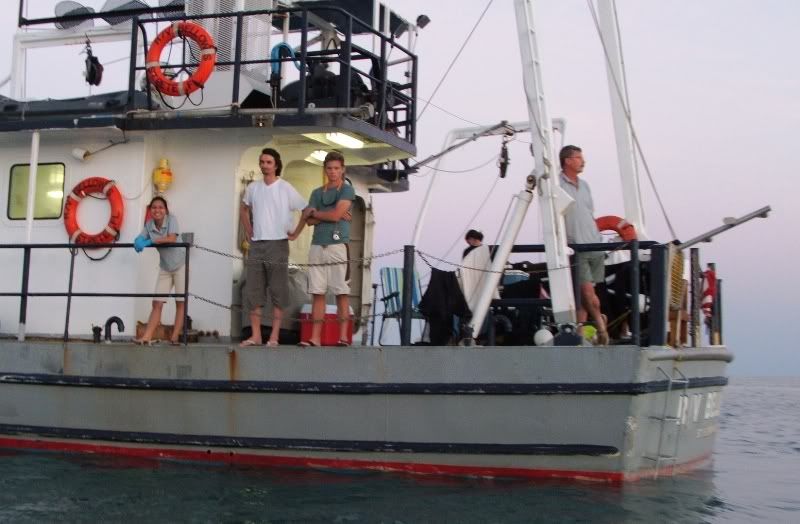
The Bellows is a 65' research vessel operated by a consortium of State Universities in Florida. Last week I had the good fortune to join 9 scientific colleagues and 3 crew for a 6-day expedition in the "Dry Tortugas" area, about 70 miles West of Key West. The Dry Tortugas are a group of small islands, reefs, and seagrass beds, the centerpiece of which is Garden Key, site of remarkable, civil-war era Fort Jefferson.

The huge, brick structure standing out in the middle of nowhere is one of the weirdest things I have ever seen in my life. A ferry ticket for a tourist trip to the Fort is $180 for the day, so we felt lucky to have two full days moored near the Fort for free. We could go ashore there or explore the nearby islands from a small dingy.
Below, Dr. Cliff Ross, a cell biology professor at the University of North Florida, returns to the Bellows with his crew of students. Cliff is studying a mysterious slime-mold called Labyrinthula, which afflicts seagrasses. Like E. coli in the human body, Labyrinthula is always present in seagrasses, but only certain strains, under certain conditions, cause sickness and death for the host. Cliff is trying to tell the strains apart and to figure out what environmental factors might cause them to become virulent.
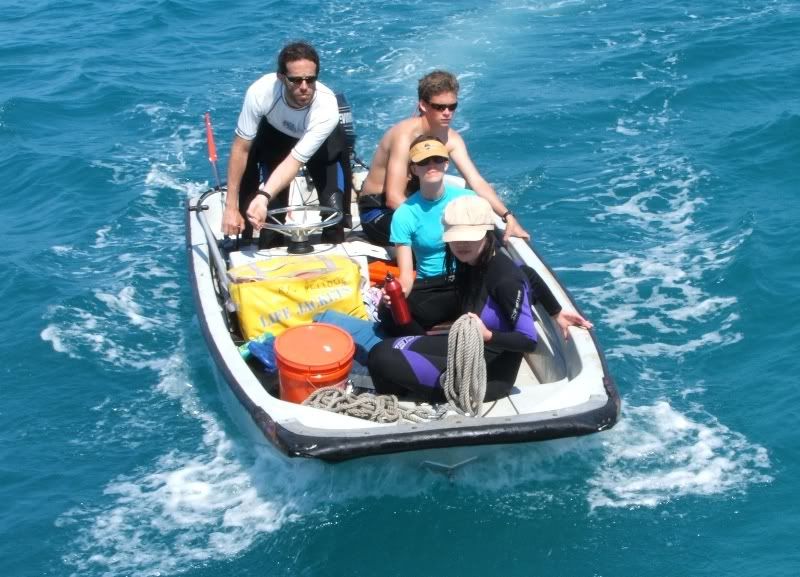
Back to the Fort, it was truly amazing, and suprisingly well-preserved for something so old.
The courtyard in the center of the Fort.
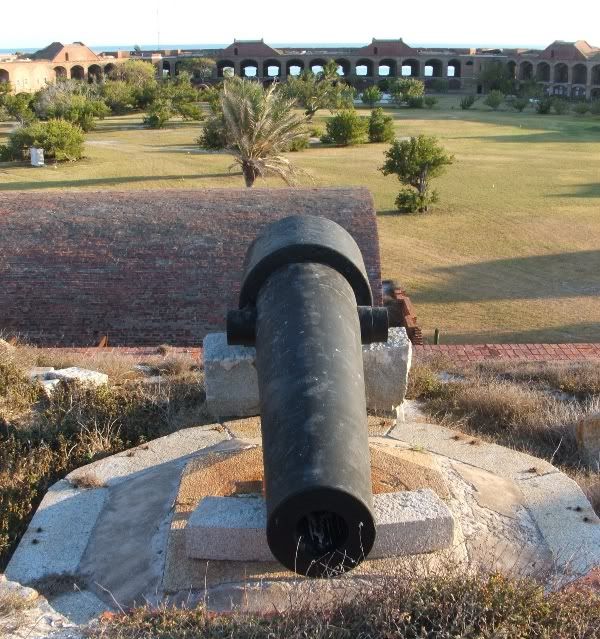
The ammunition storehouse, protected by a six-brick-thick ceiling.

Looking through the arches along one of the walls.
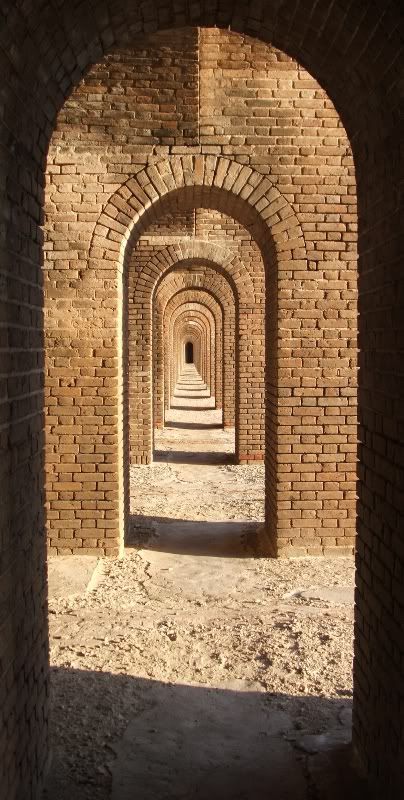
The moat around the fort has a lot of seagrass growing in it. The fish visible in this picture are snapper.
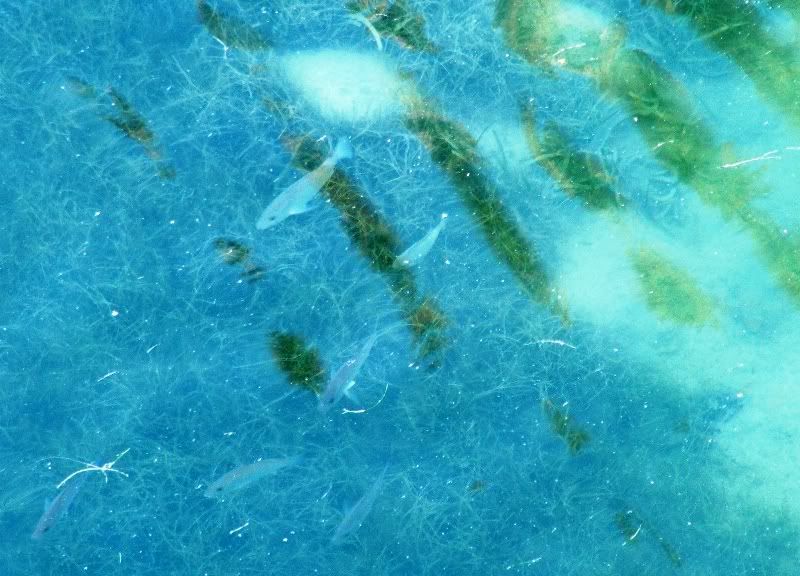
Me on top of the wall of the Fort, with its lighthouse and moat visible in the background. The black thing on the other side of the moat is a recent, Cuban refugee raft. I don't know if they made it ashore or were picked up by law enforcement before setting foot and gaining amnesty.
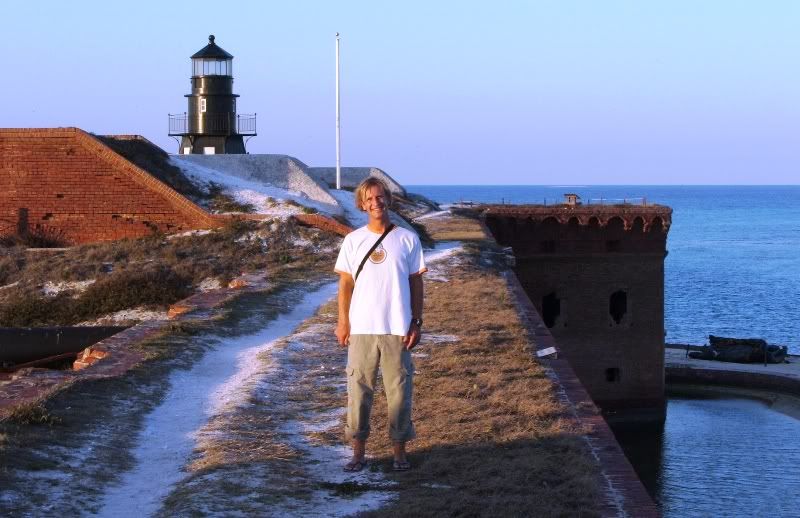
There was definitely a law-enforcement presence in the Tortugas, as evidenced by this NOAA boat arresting some fishermen for dumping fish guts inside the "RNA" (Research Natural Area).

Most of the Dry Tortugas are protected from commercial and recreational fishing, so there are some very large, old fish in the area.
This modest-sized tarpon was hanging around the docks at Key West. We saw bigger ones snorkeling in the Dry Tortugas, though, along with giant barracuda, snook, and nurse sharks.
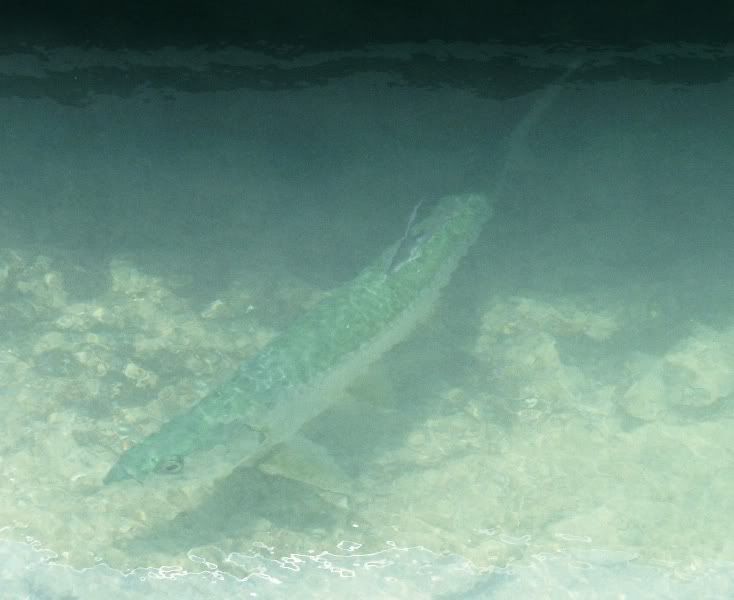
The most spectacular fish we encountered were Goliath Grouper, formerly known as Jewfish. A group of four 200+ lb monsters hung out beneath the Bellows when we were anchored near Fort Jefferson. I took this video of one from the surface, but you can't really tell how big it is. When my friend Dan gets his underwater pictures back I'll try to post some of those. I got right up close to some of the bigguns, so if the pics turn out they should be sweet.
Adjacent to Fort Jefferson is an island set-aside as a bird rookery. It was constantly swarming with Sooty Terns and Brown Noddys.
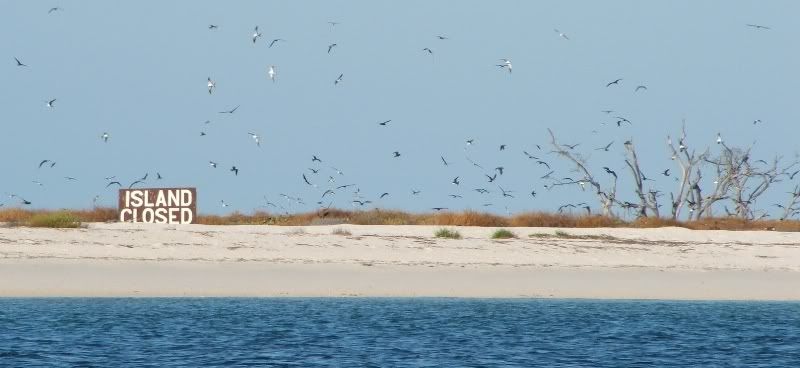
The bird poop fertilzed the adjacent waters, causing blooms of the chemical-rich cyanobacteria (blue-green algae) "Lyngbya". Most of the other researchers on the boat were studying the toxic algae to look for compounds with potentially beneficial pharmeceutical effects, so they were overjoyed to collect mounds of the stinking muck. They weren't so happy sorting through it all back on the boat, though.
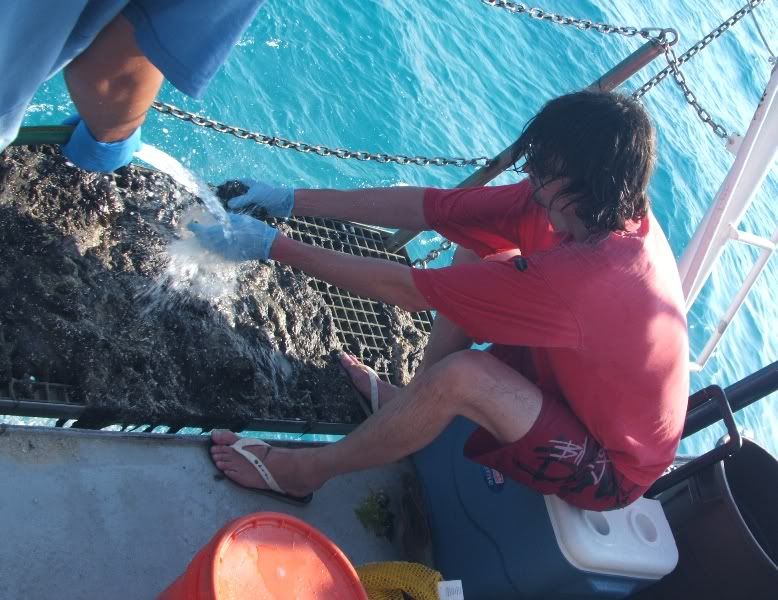
The Lyngbya stench almost ruined our appetite for dinner, but not quite. Mark, the cook, always came up with stuff delicious enough to dispell any trace of seasickness.
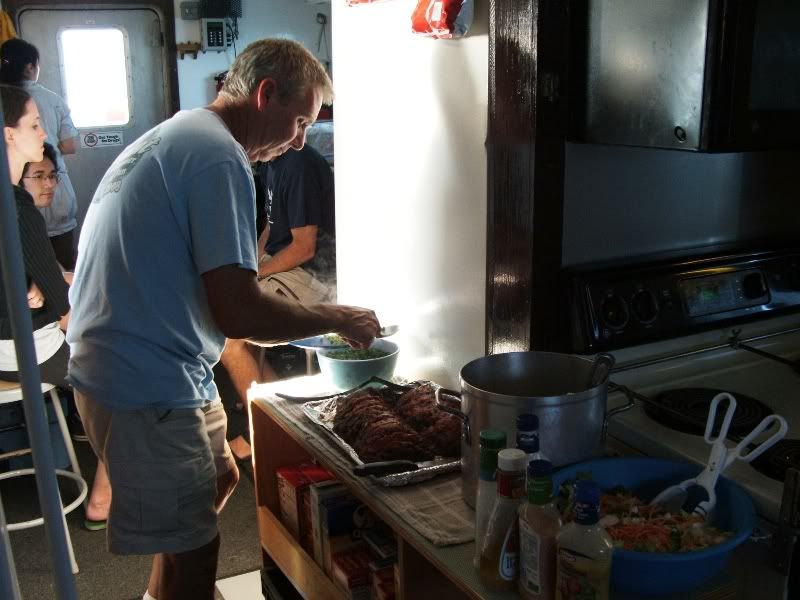
The quarters on board were kind-of cramped, but the boat was well-maintained, and the cruise overall was much more enjoyable than my only other multi-day cruise experience, several years ago in a nightmarish commercial fishing vessel off of Oregon. This trip the weather was nice and I barely needed any Dramamine. Only two of the scientists puked.
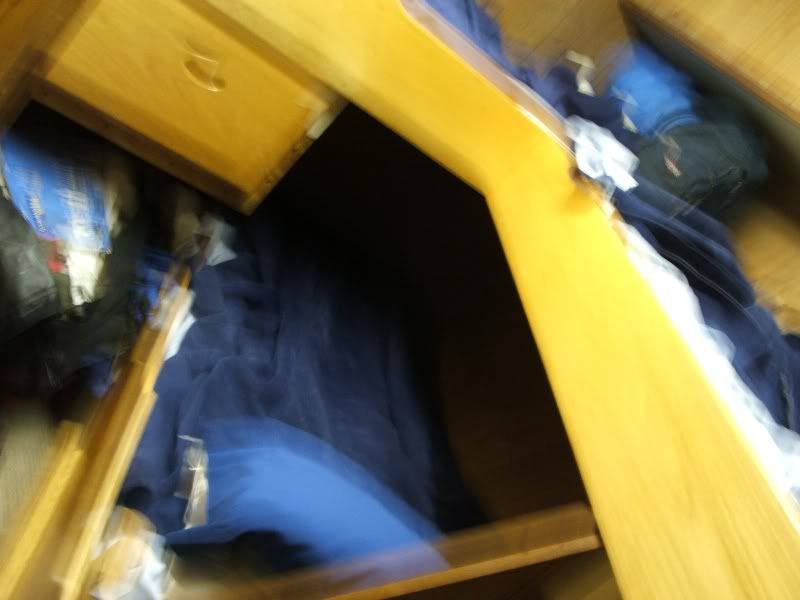
Watching beautiful, picture-perfect sunsets and swimming in warm, crystal clear waters, I could almost forget I was working.
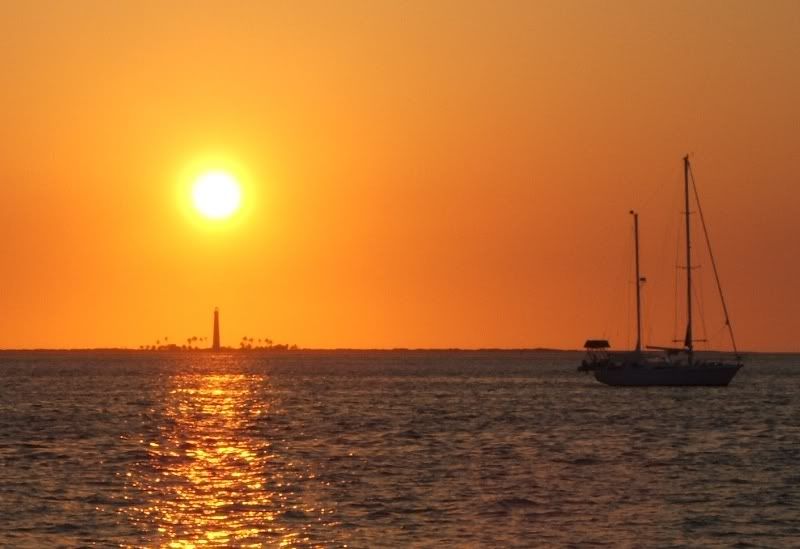
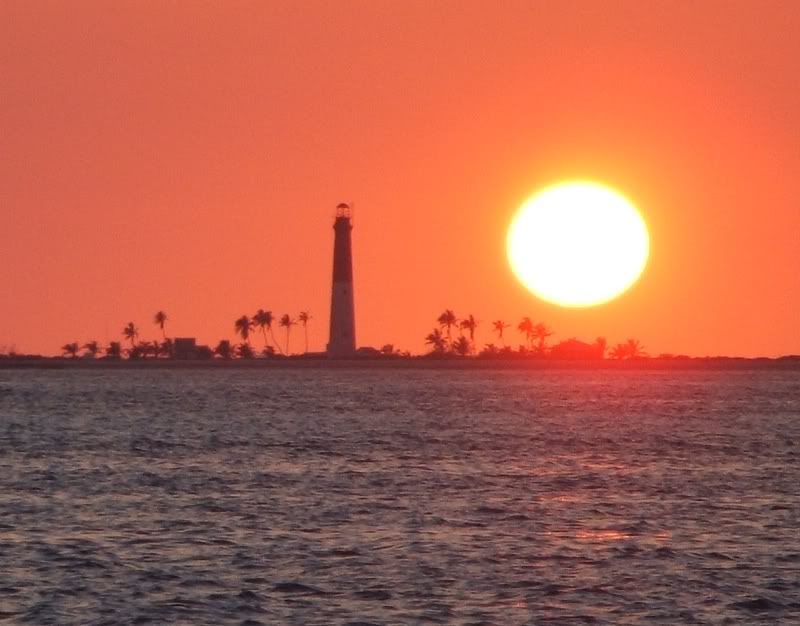

3 comments:
I want your job.
What a great life!!! The pictures of the fort were wonderful. Would never have seen it if not for you. Thanks for taking the time to post.
James,
Let me just say that I'm filled with an insane jealousy, guaranteed to drive me mad. I so wanted to be a marine biologist when I was young. Deep family strife killed my dreams, but that's how things go sometimes. Keep livin' the life, dude.
-Ian
www.hudsonwindsurfer.blogspot.com
Post a Comment